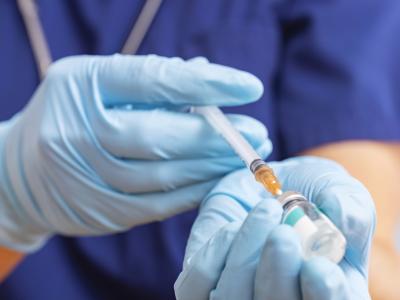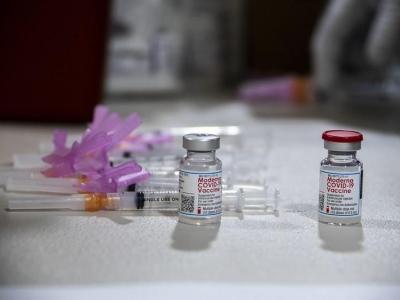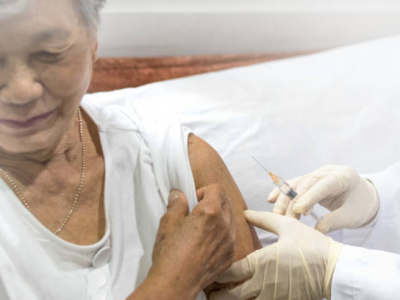High rate of multidrug-resistant bacteria reported in Ethiopian hospital
In a study yesterday in Antimicrobial Resistance and Infection Control, Ethiopian researchers reported an alarming level of multidrug resistance among patients with healthcare-associated infections (HAIs) at a university hospital.
The cross-sectional study was carried out by researchers at Jimma University Medical Center from May through September 2016. A total of 1,015 patients were admitted during this period, and microbiologic investigation was conducted for 192 patients who were suspected of having an HAI. Investigators collected different clinical specimens (blood, urine, wound swab, pus, and sputum) from the patients, identified the bacterial pathogens, and performed antibiotic susceptibility testing.
Overall, 126 bacterial pathogens were isolated from 118 patients with culture-confirmed HAIs. The most commonly isolated bacteria were Escherichia coli (31 isolates, 24.6%), Klebsiella pneumoniae (30 isolates, 23.8%), and Staphylococcus aureus (26 isolates, 20.6%), all of which showed very high resistance patterns. Among the 126 isolates, 38 (30.2%), 52 (41.3%), and 24 (19%) were multidrug-resistant (MDR), extensively drug resistant (XDR), or pan-drug resistant (PDR), respectively. More than half of the gram-negative bacterial isolates (51%) were positive for extended-spectrum beta-lactamase (ESBL) or AmpC enzymes, and 25% were resistant to carbapenems.
The investigators found that the observed MDR rate was significantly associated with prolonged hospital stays. In addition, all 13 patients who died during the study period were infected with MDR bacteria.
The authors of the study suggest the high rate of XDR and PDR bacteria could be linked to a lack of antimicrobial resistance surveillance or an antibiotic stewardship program at the hospital, as well as to the absence of national antibiotic policies in Ethiopia, where purchasing antibiotics without a prescription is common practice. The country also lacks a system to assess the quality of imported antibiotics, they note, and it is likely that some are sub-standard.
"Coordinated effort is needed from all stakeholders working in [the] health system in Ethiopia to tackle this important public health problem," the authors wrote. "An immediate action should be taken at the hospital to start [an] antibiotic stewardship program to reduce the observed antibiotic resistance and prevent further complications."
Nov 19 Antimicrob Resist Infect Control study
Study finds low adherence to CDC stewardship elements in NICUs
A baseline assessment of a sample of the nation's neonatal intensive care units (NICUs) has found low compliance with Centers for Disease Control and Prevention (CDC) recommendations to improve antibiotic use in newborns and a wide variation in antibiotic usage rates. The findings appear today in Pediatrics.
The one-day cross-sectional quality audit, conducted in February of 2016, involved 143 NICUs enrolled in the Vermont Oxford Network internet-based quality improvement collaborative, an effort to decrease antibiotic overuse during the newborn period. The first part of the audit was a structured, unit-level self-assessment of policies, procedures, and guidelines related to antibiotic stewardship, based on compliance with the CDC's Core Elements of Hospital Antibiotic Stewardship Programs: leadership commitment, accountability, drug expertise, action, tracking, reporting, and education.
For the second part of the audit, auditors conducted patient-level assessments, looking at patient demographics, antibiotic use, reason for antibiotic therapy, and what appropriate cultures were obtained before therapy. Results were used to calculate the antibiotic use rate (AUR), defined as the number of infants who were on antibiotic therapy divided by the total census for the day, for each participating NICU.
The results of the unit-level assessment showed that none of the NICUs addressed all seven of the CDC core elements, and only two elements—accountability (55%) and drug expertise (62%)—had more than 50% compliance. Only 15% of NICUs said they tracked AURs, and only 6% said they reported information on antibiotic use and resistance to clinicians.
Of the 4,127 infants audited for antibiotic exposure, 725 received antibiotics, for a median hospital AUR of 17% (interquartile range, 10% to 27%). Of the 412 infants who received antibiotics for more than 48 hours, only 26% had positive culture results, 17% had no culture obtained, and 69% had at least 1 negative culture result.
"There are significant gaps between the CDC recommendations and current antibiotic stewardship capacity and practices in newborns," the authors of the study write. "Systemic quality improvements can be used to address these deficiencies and should be tested for their ability to be used to promote adherence to the CDC core elements and the appropriate use of antibiotics in the newborn period."
Nov 20 Pediatrics abstract















